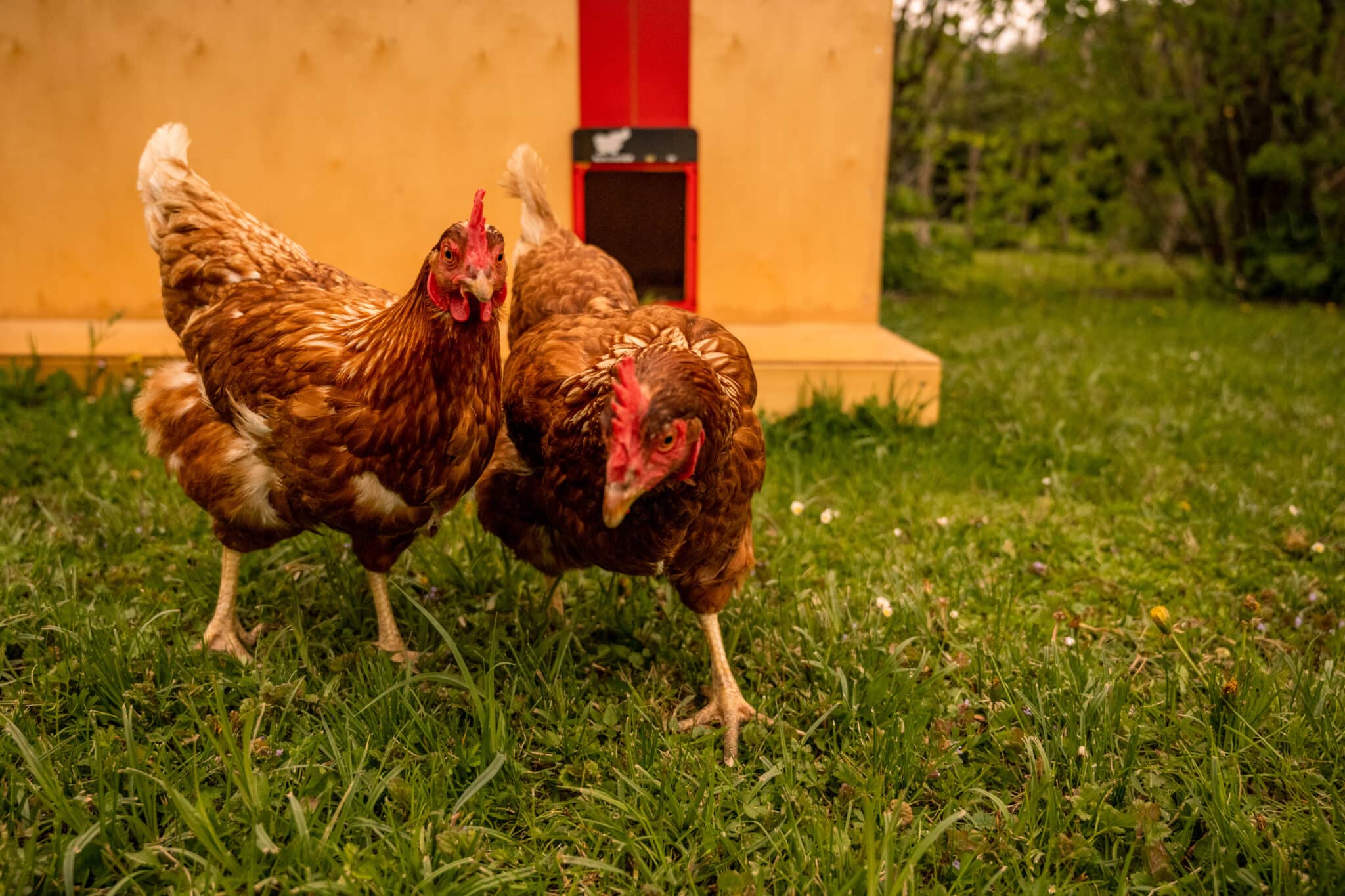Have you ever wondered, “Do chicken bites hurt?” It’s a curious question that might pop into your mind as you watch your feathered friends pecking around their coop or scratching for treats. While chickens may seem harmless and even cuddly at times, their sharp beaks can indeed inflict pain, albeit usually mild and fleeting.
Let’s learn about chicken pecking and explore the factors that influence the painfulness of chicken bites.
Anatomy of a Chicken Beak: A Delicate Instrument with a Surprising Power
A chicken’s beak, unlike ours, is made of keratin, the same protein that forms our fingernails and hair. It’s a lightweight yet sturdy structure, composed of an upper and lower mandible that work together to grasp, manipulate, and break down food.
While the beak lacks teeth, its edges are surprisingly sharp, capable of delivering a quick and sometimes painful pinch.
Pecking is a fundamental behavior for chickens, serving a variety of purposes. They use their beaks to gather food, clean themselves, and even defend themselves from predators or perceived threats. The pecking motion is rapid and forceful, generated by specialized muscles in the chicken’s head.
Intensity of Chicken Bites: From Gentle Pecks to Forceful Pinches
When chickens nibble or peck, it can be gentle, like a little nudge that you hardly feel. Or it can be stronger, like a pinch that might leave a small bruise or scratch. How much it hurts depends on a few things: how the chicken is feeling, what’s happening around them, and where they’re biting.
If a chicken is protecting its chicks, guarding its food, or feeling threatened, it might give a harder peck. These bites can sting a bit, but usually, they’re more like a chicken’s way of saying, “Hey, be careful!” rather than trying to be mean. Understanding why chickens bite helps us see how they talk to each other and react to what’s going on in their world.
First Aid for Chicken Bites: A Simple yet Effective Approach
In the event of chicken bites, which are typically innocuous yet necessitate proper attention, it is imperative to acquaint oneself with an effective care routine to thwart infections and expedite the healing process. Presented below is a meticulous and straightforward first aid approach:
Thoroughly Cleanse the Wound:
Initiate the healing process by delicately washing the chicken bite with a mild soap and water solution. This meticulous step is crucial for eliminating any potential contaminants, such as dirt or debris, from the affected area.
Apply Disinfectant for Optimal Antiseptic Protection:
Enhance the protective measures by applying a suitable antiseptic, such as rubbing alcohol or hydrogen peroxide, to the wound. This proactive measure serves to stave off infections and foster an environment conducive to healing.
Prudently Bandage the Wound (if deemed necessary):
Should the chicken bite result in bleeding or present an open wound, exercise prudence by covering it with a sterile and clean bandage. This serves the dual purpose of safeguarding the wound from external contaminants and facilitating an undisturbed recovery.
Vigilant Monitoring for Signs of Infection:
Post-application of first aid, exercise diligence in monitoring the chicken bite for any indicative signs of infection. Keep a watchful eye for symptoms such as redness, swelling, or heightened pain. If any of these manifestations become apparent, it is imperative to promptly seek professional medical attention for a comprehensive evaluation and tailored intervention.
By adhering to this thorough and methodical first aid regimen, individuals can ensure optimal care for chicken bites, mitigating the risk of complications and fostering a swift and uncomplicated recovery.
Prevention is Key: Understanding Chicken Behavior and Minimizing the Risk of Bites
Mitigating the risk of chicken bites necessitates a nuanced understanding of their behavior and the implementation of strategic preventive measures. Delving into this essential aspect of chicken care, the following comprehensive tips serve as a guide for fostering a harmonious human-chicken relationship while minimizing the potential for bites:
1. Handle Chickens with Deliberate Care:
Employ a cautious and deliberate approach when interacting with chickens. Avoid abrupt movements and loud noises that may startle them, as chickens are inherently sensitive to sudden disruptions in their environment. By handling them with care, individuals can create an atmosphere of trust, reducing the likelihood of defensive or fearful reactions that may lead to bites.
2. Supervise Children’s Interactions:
Recognizing the heightened susceptibility of children to chicken bites, it is imperative to maintain vigilant supervision during their interactions with poultry.
Educate children on the importance of gentle handling and the need to refrain from actions that may provoke the chickens. This proactive approach not only safeguards the well-being of children but also promotes a positive and secure environment for both parties.
3. Respect Chicken Boundaries:
Acknowledge and respect the boundaries of individual chickens. It is crucial not to attempt to pet or pick up a chicken that exhibits discomfort or resistance to being handled. By recognizing and honoring their preferences, individuals can establish a rapport based on mutual understanding, fostering a more amicable environment and reducing the likelihood of defensive reactions.
4. Harness the Power of Technology with Automatic Chicken Coop Doors:
Integrate technological solutions, such as an Automatic Chicken Coop Door, to streamline and minimize the need for human intervention. These automated systems enable chickens to enter and exit their coop at their own pace, mitigating the potential for stressful interactions that could lead to bites.
Embracing such advancements in poultry management enhances the overall well-being of the flock while concurrently reducing the risk of human-chicken conflicts.

Final Words
Chicken bites, though often harmless, can range from gentle pecks to forceful pinches depending on various factors. Understanding chicken behavior, taking preventive measures, and knowing how to treat bites properly can help ensure a harmonious relationship with your feathered friends.
Remember, chickens are intelligent and sensitive creatures, and treating them with respect and understanding will minimize the risk of bites and foster a positive bond.
